Mowing Solutions for No-Drill Gardening
When we handed over the Mekse project in Spring 2022, we were surprised to find land plowed twice a year, which sounded awkward for a “Nature Park.” But the Mayor insisted, multiplying arguments: wildfires happen every summer, dangerous snakes hide in wild oats, and a land full of weeds and thistles is neither clean nor nice. We took videos of the dancing grass in the wind, identified snake species (Dolichophis jugularis and Natrix tessellata), which are non-venomous, cleaned the land of old thistles in winter, and successfully passed two summers without fire. But one cannot play with fire for too long.
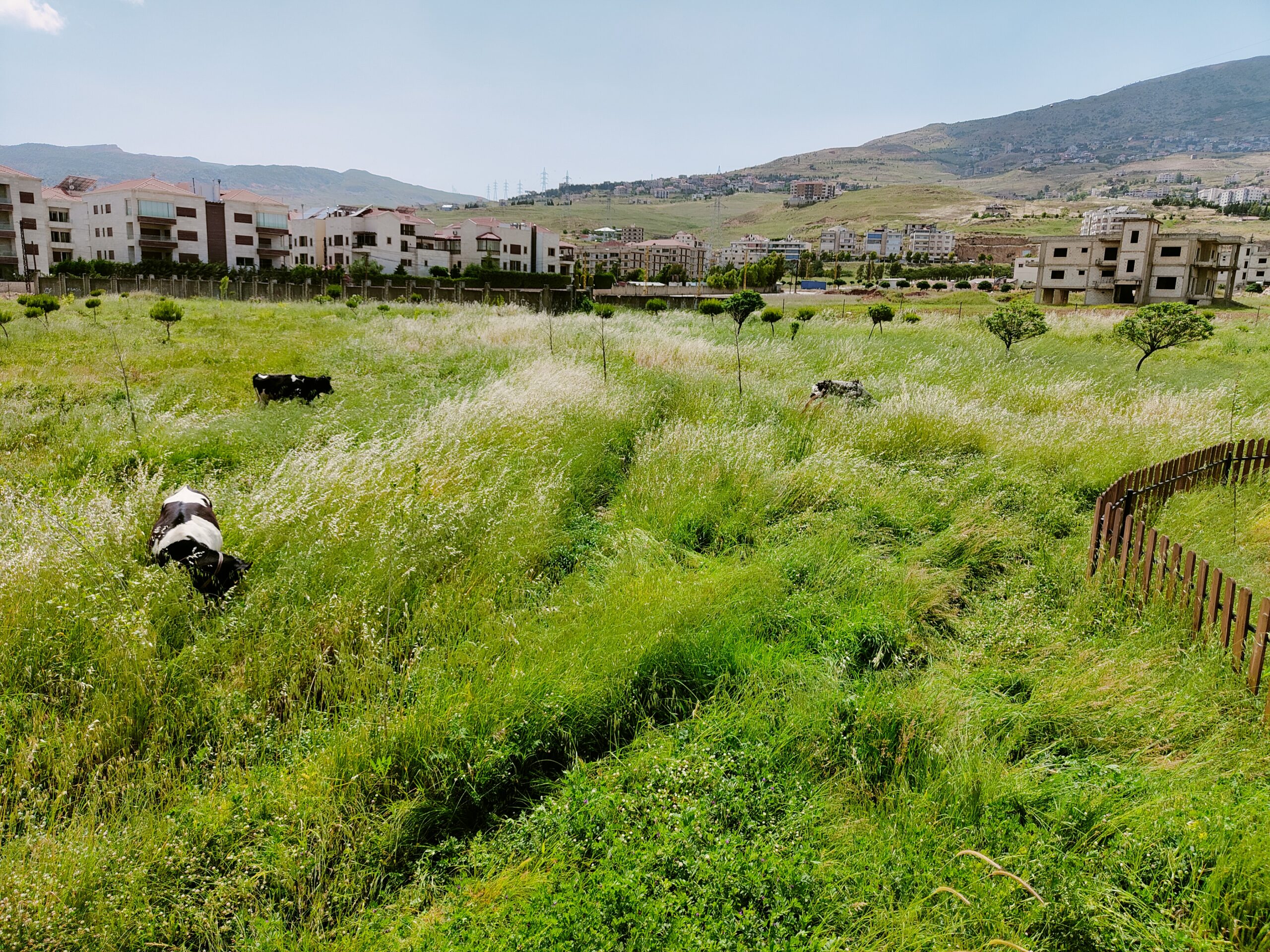
May 2023 © GdV
However, mechanical mowing systems are inconvenient: they are costly, noisy, time-consuming, and have no positive side effects. They do the job but no more. Yet, in ecology, we focus more on indirect impacts and wastes than direct goals: cyanobacteria feed on solar energy, rejecting dioxygen as waste, and thus create the Earth’s atmosphere; worms dig up to the surface to feed on litter, and in doing so, aerate the soil, etc. So, in ecological terms, a system with positive goals but only negative side effects is bad.
So, alternative mowing solutions had to be found. We naturally headed toward grazing animals, studying scientific literature and discussing with farmers and shepherds. Then, we developed several experiments, noting all the side effects of the presence of the animals.
1° Reduced Herds of Goats and Sheep
Levantine shepherds usually work with mixed herds of goats and sheep for two reasons: the main one is that goats produce milk for a longer period of time (10 months against 8 months for sheep), and the second one is that goats open paths in the wild on which sheep can then walk.
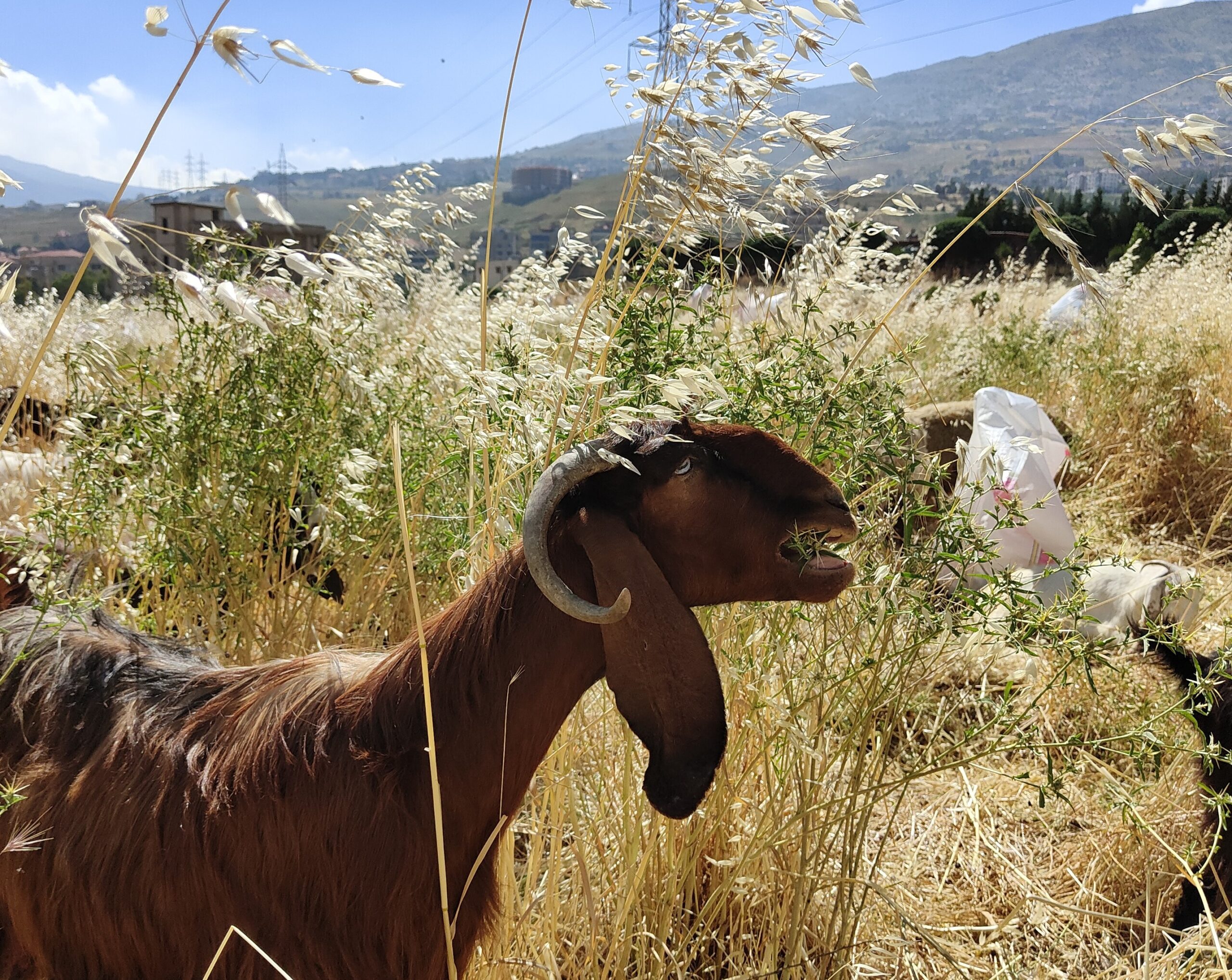
Chami goat (June 2023) © GdV
So, at the beginning of Summer, when the land is so covered by high wild oats and thistles that a man cannot walk, goats are the best ally. While sheep stay grazing on the same spot, goats keep walking and exploring new areas. Furthermore, goats are fond of thistles and are not afraid at all of their large and strong thorns. However, their large appetite frightens any plant, and trees are not spared. Even covered with bags, their bark can be snatched, leading to the tree’s death.

Land prepared to receive the herd (September 2022) © GdV
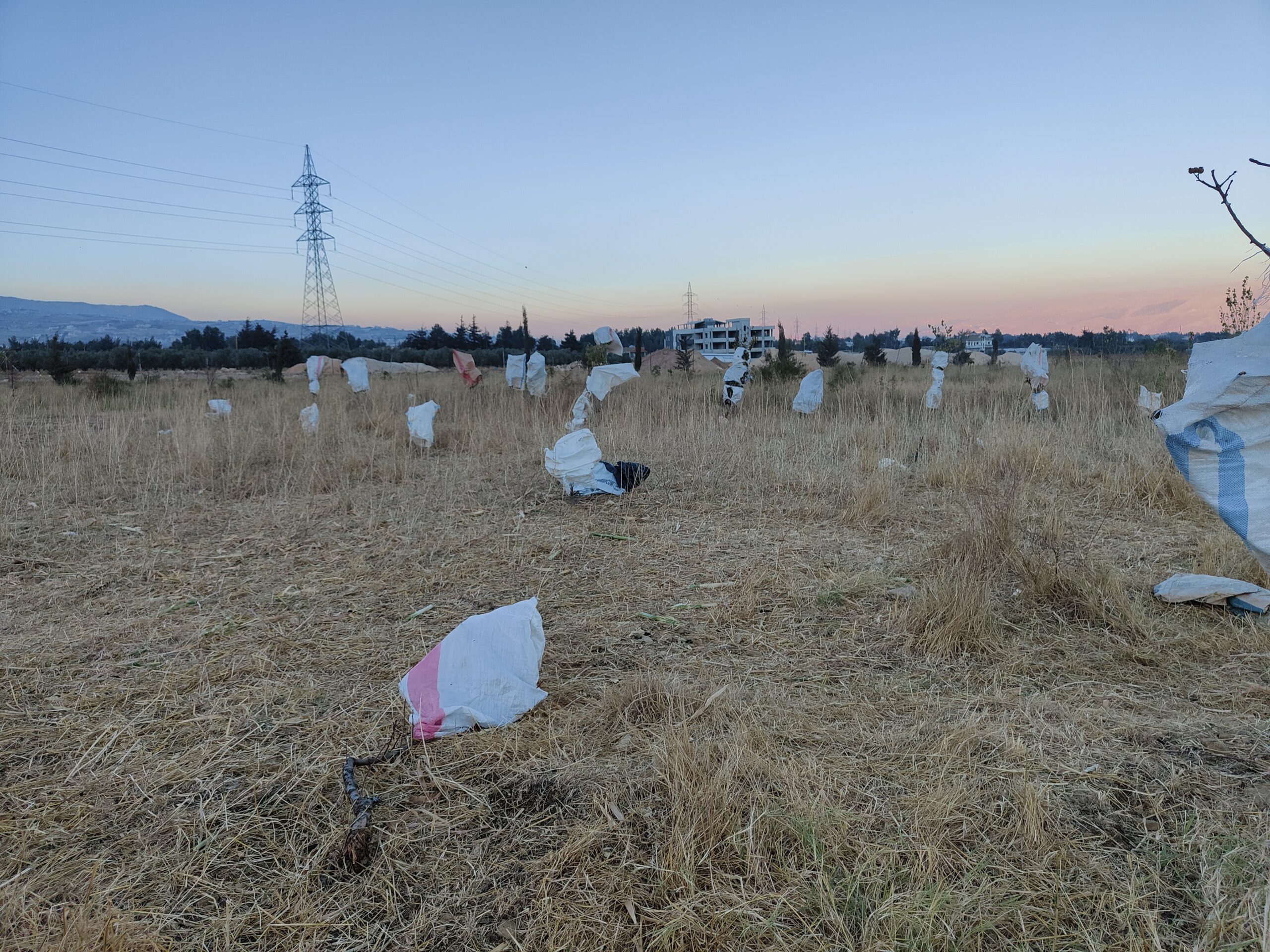
After a day of grazing by a mixed herd (September 2022) © GdV
2° Large Herds of Sheep at night
That is why farmers prefer using the services of large herds of sheep (200 heads), which can clean a field in one day without hurting the planted edges. However, on a site like Mekse Conservatory Garden, shrubs are also endangered by the sheep’s appetite. Indeed, they enjoy a diversified diet and then add shrubs’ leaves to their meal of grass. The solution came through shepherds. They noticed that their sheep behave differently during the day and at night and do not raise their heads from the ground in the dark, so they only graze on grass. They do not eat saplings at night. However, these large animals can break them, especially when they move in large herds. Another solution must be found for recently planted plots.
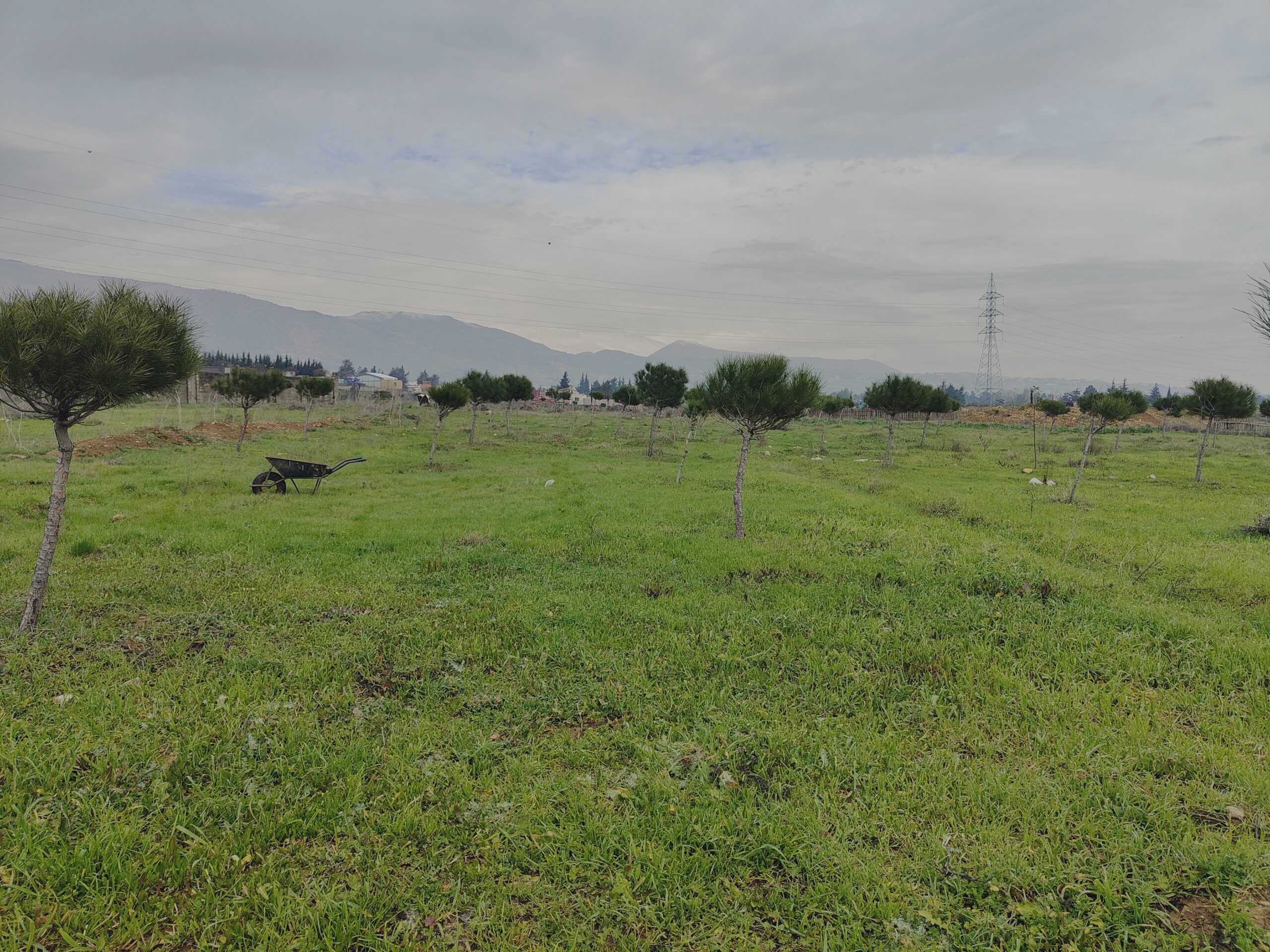
Pine forest after a night of grazing by two hundred sheep © GdV
3° Herds of Geese
On the plot of the new garden forest, we housed a herd of a dozen geese that spend the night in a mobile pen. They graze on the grass of the 10m2 square of the mobile hen and spread their manure on the area. After a few weeks, the entire plot is mowed and fertilized. Here appears the first positive side effect: fertilization. And a second one follows. Indeed, when one sees a herd of geese moving around the land and swimming in the pond, he immediately understands that Tchaikovsky was better inspired by geese than swan for his Swan Lake: unlike solitary swans, geese are social animals, and all their moves appear synchronized in perfect choreography.
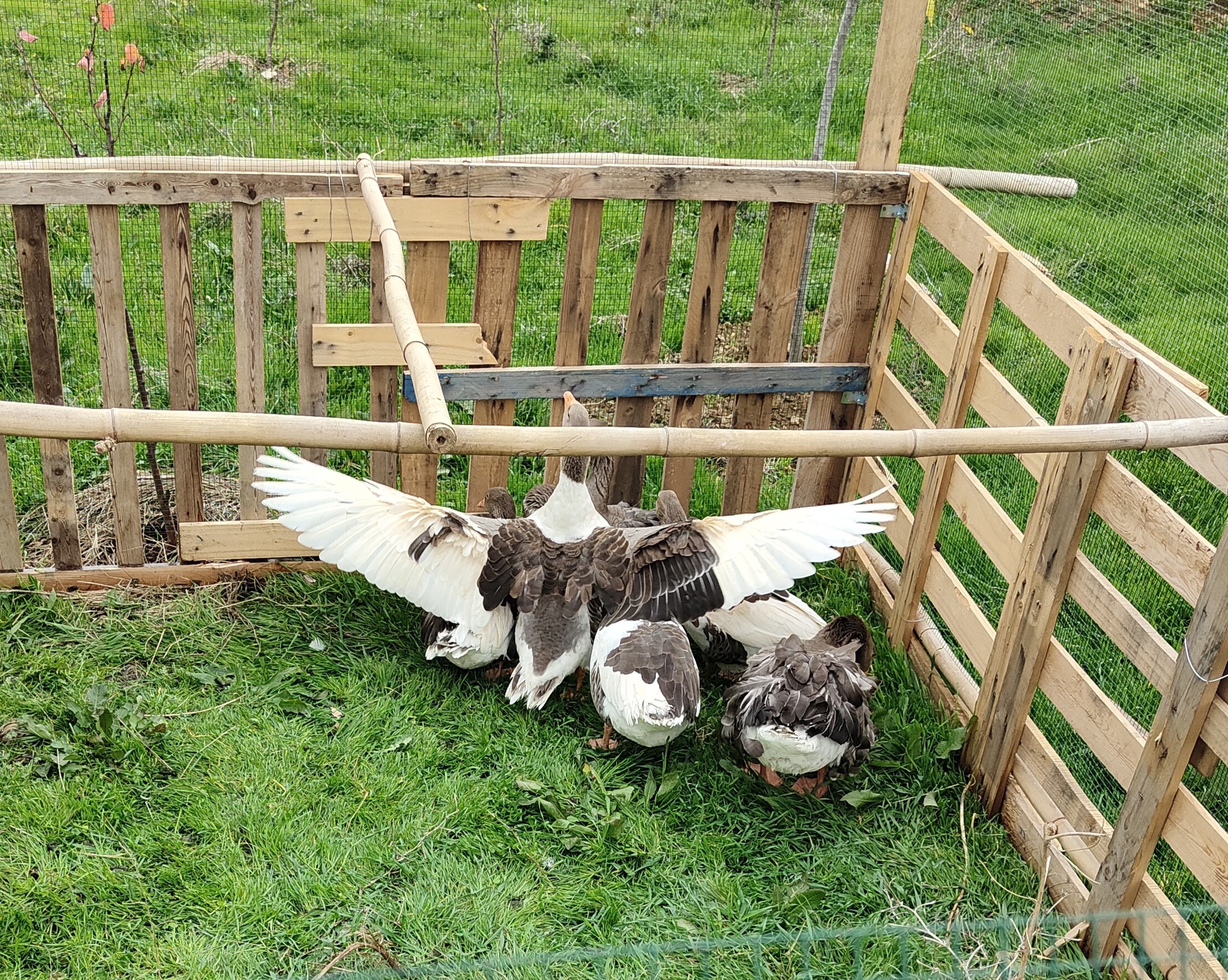
Arabic geese (December 2023) © GdV
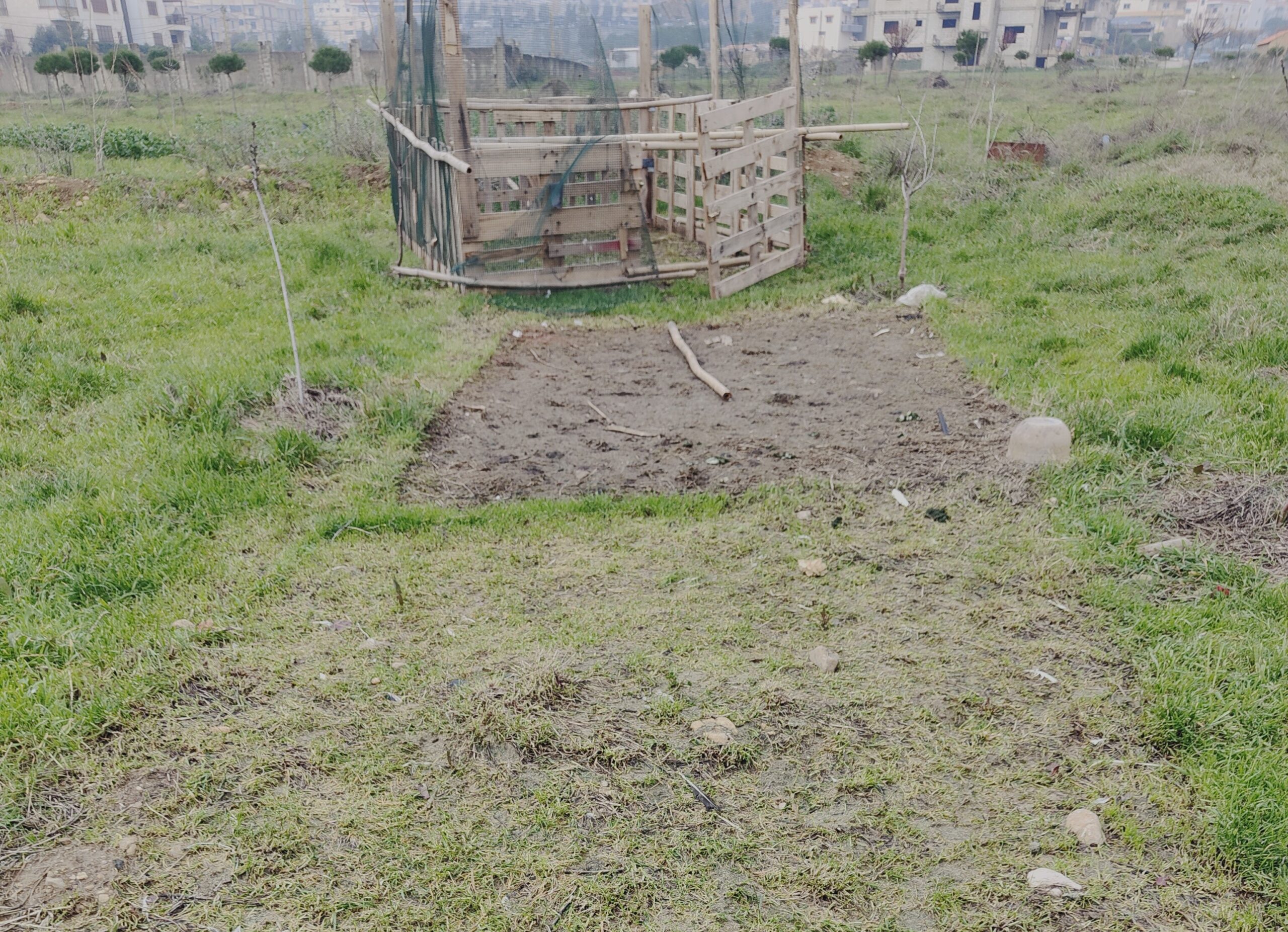
Three positions of the mobile pen (December 2023) © GdV
4° A Milk Cow
However, geese are too small to consume large plots of grass. On a 7-acre piece of land, a large mammal is required. Such is a milk cow. Hence, we introduced a milk cow, a three-year-old Holstein Friesian, which daily eats 55 kg of grass. Between its grazing and grass cut for the summer, it cleans a good part of the land. Besides, night manure can be spread from the stable to the bottom of each tree. Here, new positive side effects appear: a 600 kg animal is stronger than a man and can help in carrying or moving heavy materials on-site. And, of course, a cow produces milk, hence it brings the possibility of a whole production system derived from milk transformation.
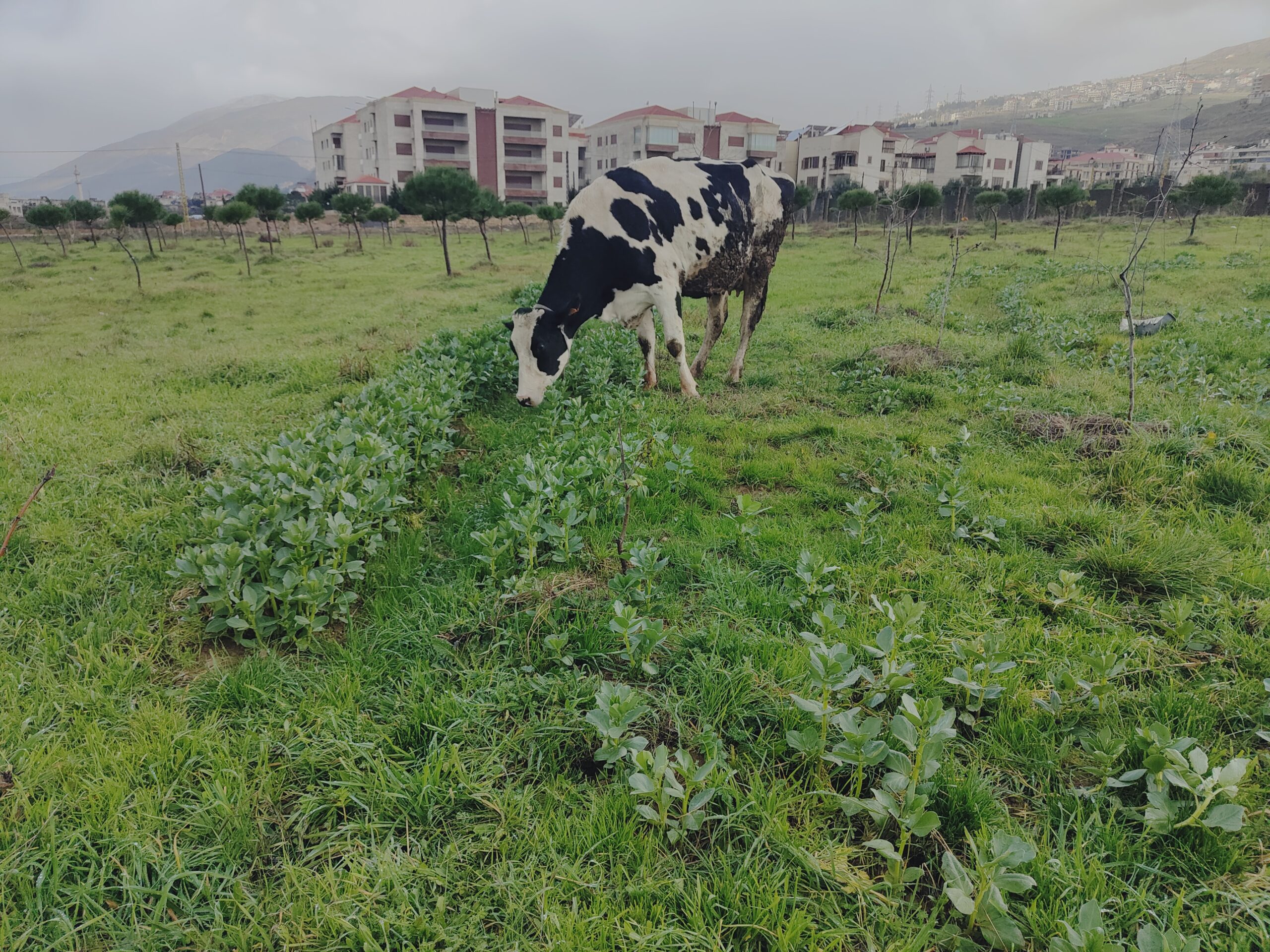
The cow cleaning the grass between bean rows (January 2024) © GdV
In conclusion, we can identify three systems of fire control. The first one, used on-site during the first 3 years, is plowing. It efficiently prevents wildfires but only because the little organic matter that could grow disappears into the soil, which remains dead due to such a perturbation of its different layers. Humidity from the soil evaporates, and the majority of the trees die out because of this accelerated drought. Here, the fulfillment of the subsidiary goal, namely fire control, prevents the implementation of the main objective: planting a garden. To put it in a nutshell, this solution is one of teeth pullers, who sacrifice the teeth instead of caring for their decay. The second solution, mechanical mowing, satisfies the goal, as a hammer pounds down a nail. The hammer remains stored and is taken out only when needed to hammer: a hammer hammers, it is efficient for the goal it was designed for, but no more. Ecological solutions differ from the teeth puller’s solution as well as purely technical solutions. Ecological solutions are chosen not for the goal they satisfy but for the positive side effects they produce, for all that overflows from their presence.
Such an experiment has been developed thanks to Abbes al-Uqla, Dr. Khaled Sleem, Abu Fadi, Dr Jeremy Lindsell, Fayz, Nicholas Warren, Awwad, and many other shepherds.